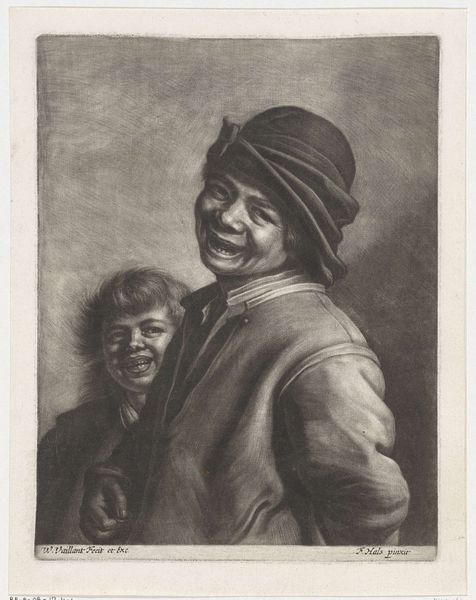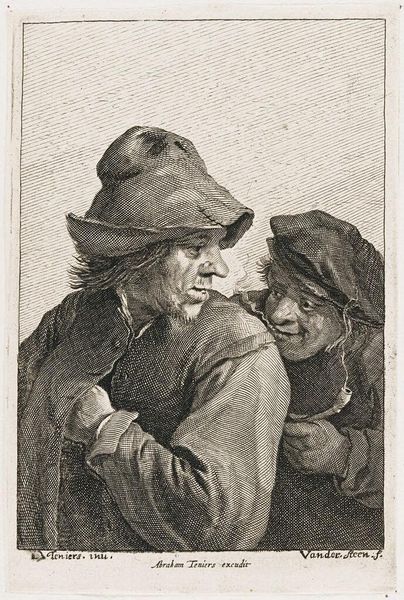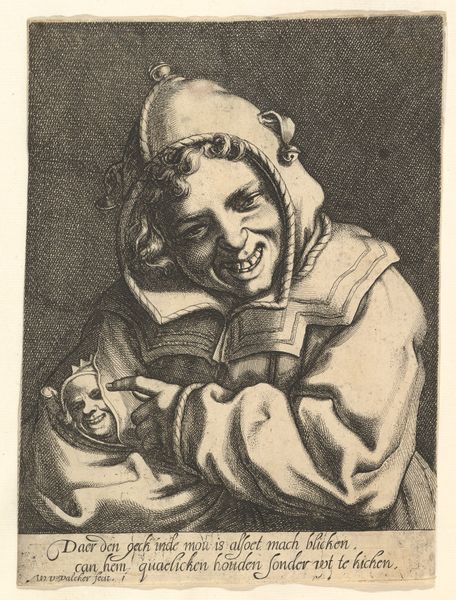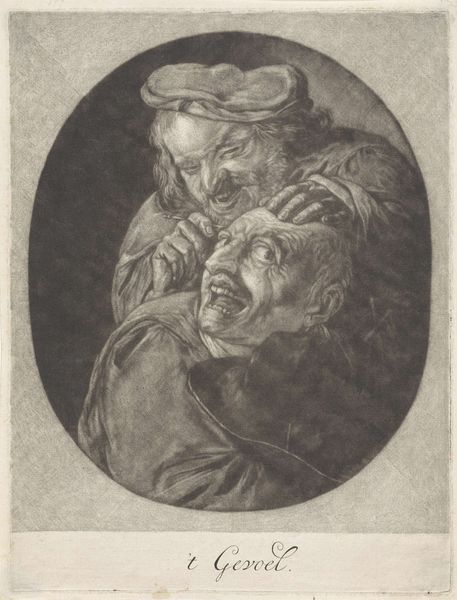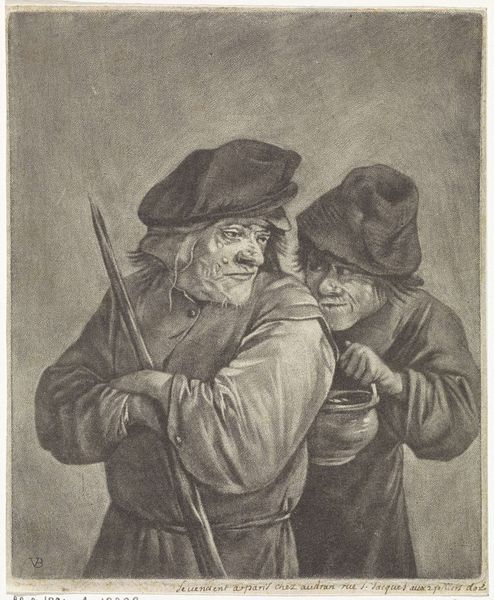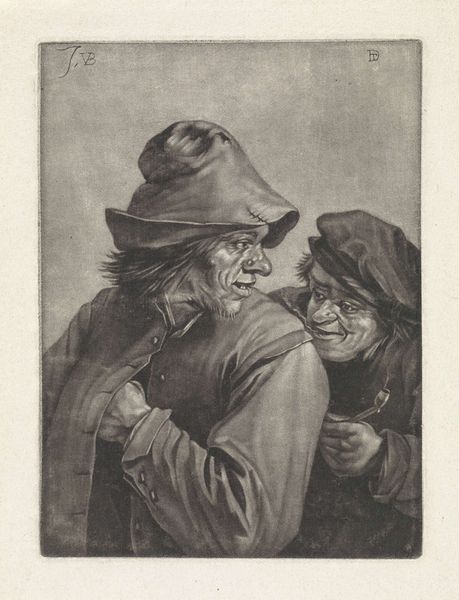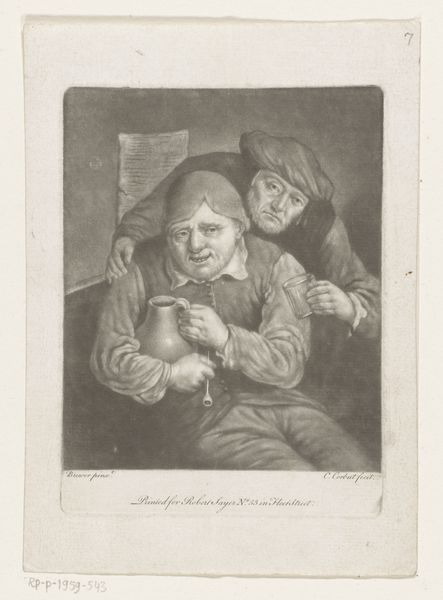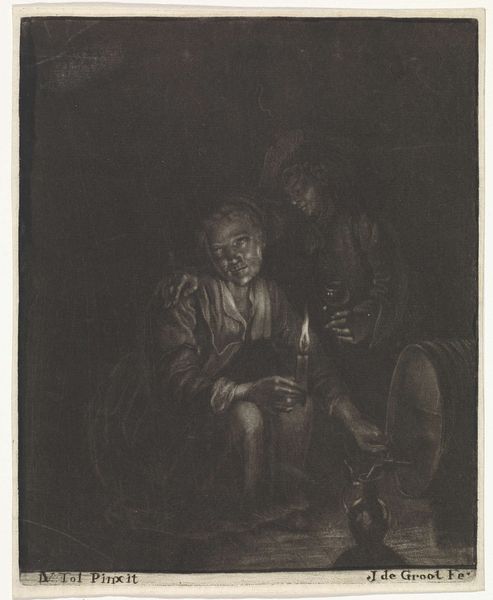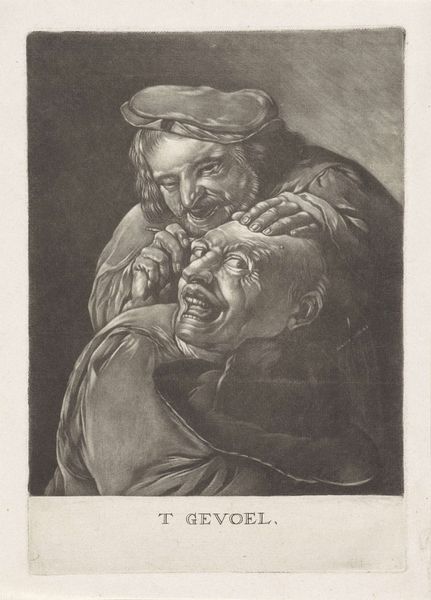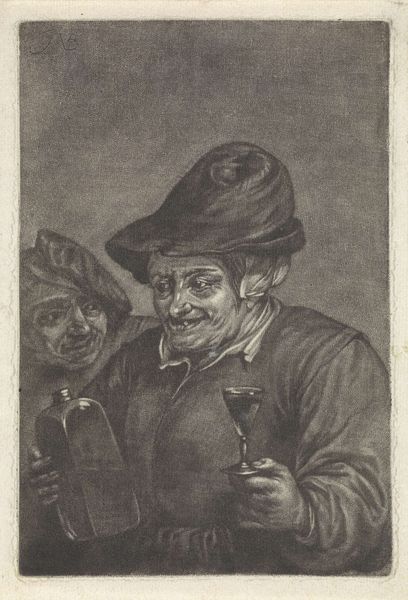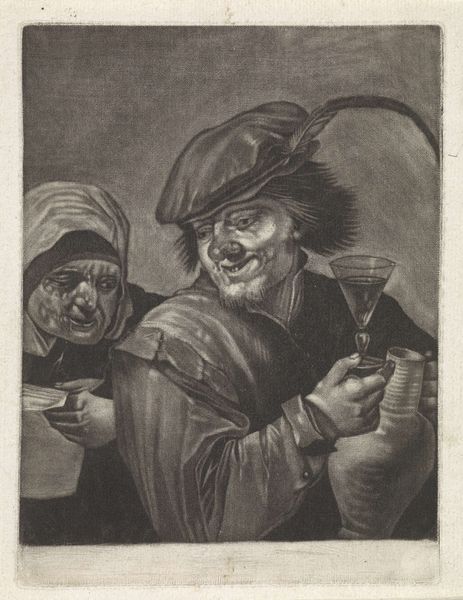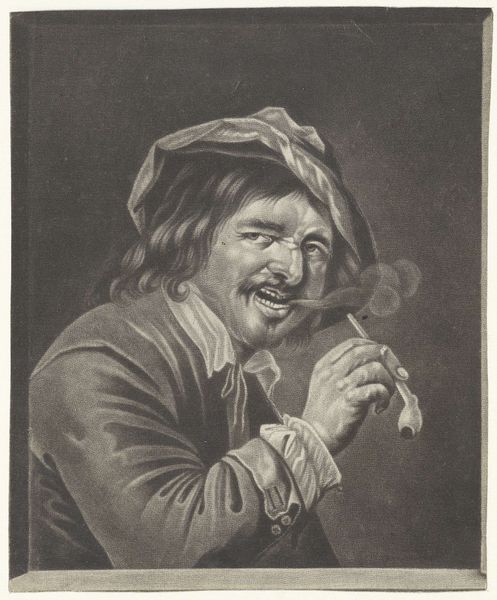
Dimensions: height 221 mm, width 176 mm
Copyright: Rijks Museum: Open Domain
Pieter Louw created this print of two laughing boys sometime in the 18th century. The Dutch Republic, where Louw lived, was at this time a vibrant place for art, but also a highly stratified society. Prints like this one were made for a growing middle class, eager to decorate their homes with affordable art. The image is taken from a painting by Frans Hals, who lived a century earlier. Louw's print flattens out the painterly surface of Hals' work. We can see in this conscious simplification the changing tastes of the art market. It's hard to know if these are the faces of real children or types. Either way, they show the influence of the theater and the rise of sentimentality as a cultural value. As historians, it is up to us to piece together the economic, social and institutional factors at play in the production and consumption of this work. By comparing the print to the painting, we learn about the transformation of artistic value and how it is contingent on culture.
Comments
No comments
Be the first to comment and join the conversation on the ultimate creative platform.
